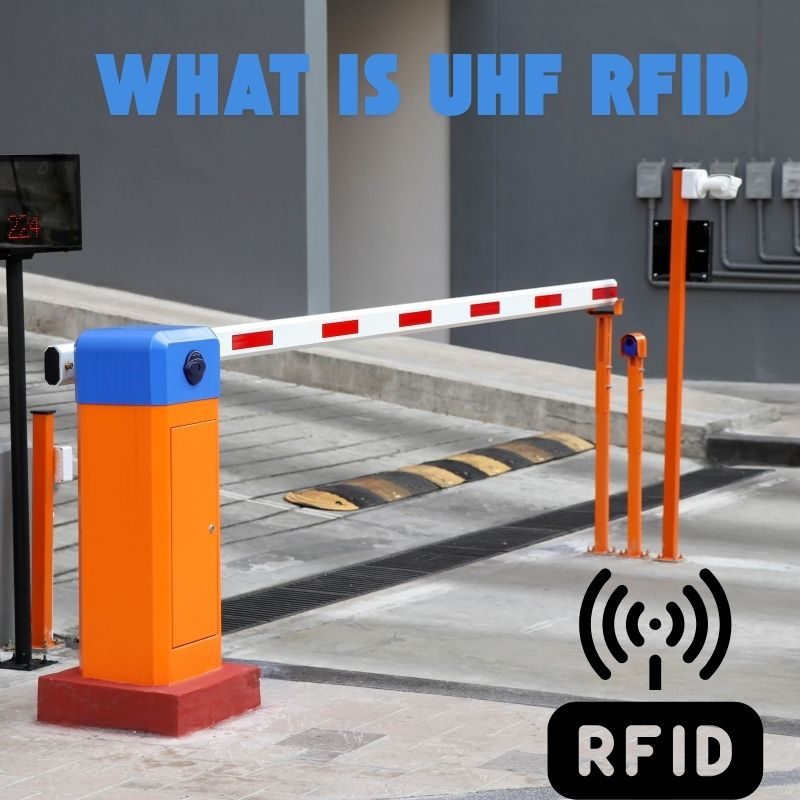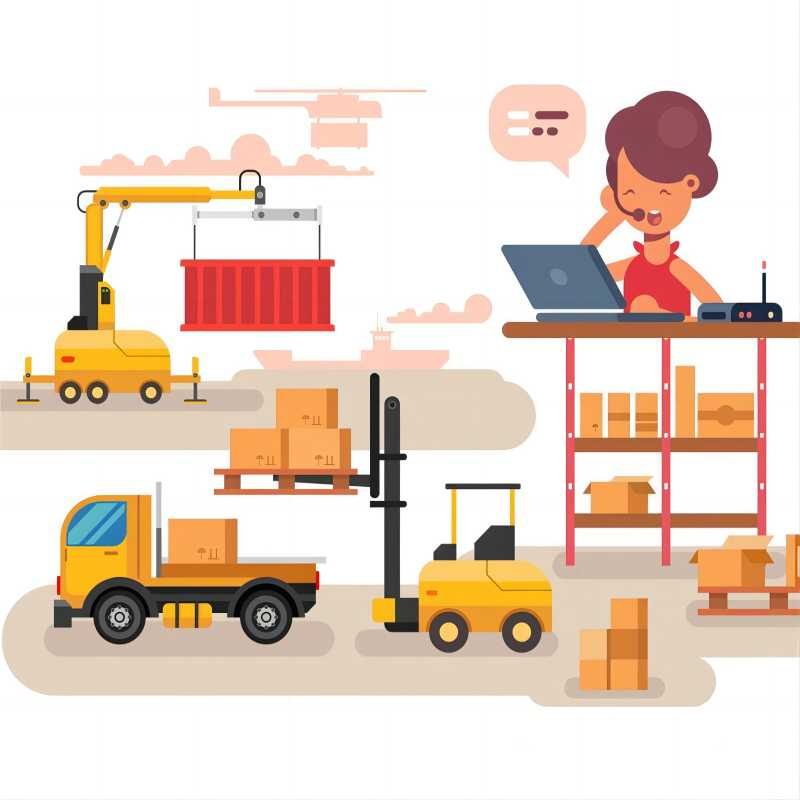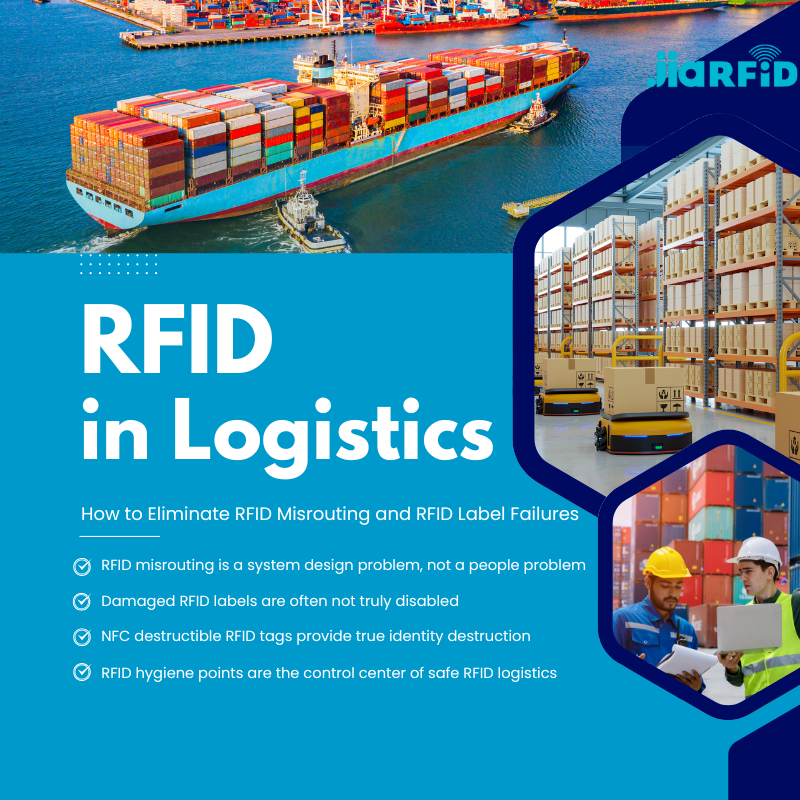
Što je UHF RFID?
Sadržaj
Uvod
UHF RFID (Ultra-visokofrekventna radiofrekvencijska identifikacija) je najsuvremenija tehnologija identifikacije koja dobiva na zamahu u raznim industrijama. Od maloprodaje i logistike do zdravstva i poljoprivrede, njezina sposobnost omogućavanja brze, beskontaktne razmjene podataka mijenja način na koji posluju tvrtke.
Bilo da RFID istražujete prvi put ili želite produbiti svoje razumijevanje, ovaj će vas vodič provesti kroz ono što UHF RFID je, kako funkcionira, njezine primjene i zašto je to tehnologija koju morate poznavati 2025. godine.

Što je UHF RFID?
UHF RFID, skraćeno od Ultra-High Frequency Radio Frequency Identification, je bežična komunikacijska tehnologija koja koristi radio valove za identifikaciju i praćenje etiketa pričvršćenih na predmete. To je jedna od tri glavne frekvencijske kategorije u RFID tehnologiji — druge dvije su niska frekvencija (LF) i visoka frekvencija (HF).
UHF obično radi u rasponu od 860 MHz do 960 MHz i dobro je poznat po:
- Veći dometi čitanja (do 12 metara ili više)
- Brži prijenos podataka
- Mogućnost čitanja u velikim količinama
Jednostavnije rečeno, UHF RFID je poput digitalnog “bar koda na steroidima” — nije potreban vidni kontakt, a stotine predmeta mogu se odmah očitati.
Kako radi UHF RFID?
Da bismo razumjeli kako UHF RFID funkcionira, pogledajmo njegove osnovne komponente:
- RFID oznake: Sadrže mikročip i antenu koji pohranjuju podatke.
- RFID čitači: Emitirajte radio valove i primajte podatke s oznaka.
- Antene: Pojačajte signal između oznaka i čitača.
- Posrednički softver/Softver: Obradi i upravlja prikupljenim podacima.
Postoje dvije glavne vrste UHF RFID oznake:
- Pasivni UHF tagovi: Oslanjajte se na energiju iz signala čitača; jeftinije i uobičajeno korišteno.
- Aktivne UHF oznake: Na baterije; pogodno za primjene na velikim udaljenostima i u stvarnom vremenu.
Ključne funkcionalnosti:
- Čitač emitira signal u UHF pojasu.
- Oznaka prima energiju, uključuje se i šalje svoje podatke natrag.
- Čitač prikuplja ove podatke i šalje ih na pozadinski sustav na obradu.
Sustav može istovremeno čitati više oznaka, čak i pri velikim brzinama — što UHF RFID čini idealnim za dinamična okruženja poput pokretnih traka ili brzo pokretnog inventara.
Prednosti UHF RFID tehnologije
Zašto UHF RFID dobiva toliku na važnosti? Zato što rješava stvarne izazove u praćenju i automatizaciji. Evo najistaknutijih prednosti:
- Domet dugog dometa: Do 12 metara, čak i u zahtjevnim uvjetima
- Masovno čitanje: Pročitajte stotine oznaka u sekundi
- Isplativo: Pasivne oznake su pristupačne za široku upotrebu.
- Vidljivost u stvarnom vremenu: Trenutni ažurirani podaci o zalihama i kretanju imovine
- Izvan vidokruga: Nema potrebe skenirati izravno kao kod crtičastih kodova.
- Proširivost: Pogodno za male operacije ili globalne lance opskrbe
Ukratko, povećava učinkovitost, točnost i automatizaciju — ključne stupove modernih poduzeća.
Uobičajene primjene UHF RFID-a
UHF RFID se nametnuo kao ključna tehnologija u suvremenim sustavima automatizacije i praćenja, nudeći izvanredan domet, brzinu i svestranost. Njegova sposobnost istovremenog čitanja stotina oznaka na velikim udaljenostima čini ga neprocjenjivim u širokom rasponu industrija.
Maloprodaja
- Kontrola zaliha
- Protukrađinski sustavi
- Automatska blagajna
- Ažuriranja dionica u stvarnom vremenu
Logistika i lanac opskrbe
- Praćenje pošiljke
- Upravljanje paletama
- Operacije križnog utovara
- Potvrda o dostavi
Proizvodnja
- Praćenje tijeka rada (WIP)
- Kontrola kvalitete
- Praćenje opreme
zdravstvo
- Narukvice za pacijente
- Praćenje opreme
- Farmaceutski inventar
Poljoprivreda
- Praćenje stoke
- Praćenje poljoprivredne opreme
- Pametni sustavi za navodnjavanje
Knjižnice i obrazovanje
- Praćenje knjige
- Upravljanje laboratorijskom imovinom
- Kontrola pristupa
Bez obzira na industriju, UHF RFID nudi vidljivost u stvarnom vremenu, učinkovitost i sljedivost.
UHF RFID naspram HF i LF RFID – ključne razlike
| Značajka | LF (niska frekvencija) | HF (visoka frekvencija) | UHF (ultravisoka frekvencija) |
|---|---|---|---|
| Frekvencija | 125–134 kHz | 13,56 MHz | 860–960 MHz |
| Opseg čitanja | ~10 cm | ~1 m | Do 12 m |
| Brzina podataka | Usporiti | Umjereno | Brzo |
| trošak | Niska | Umjereno | Varira |
| Slučajevi upotrebe | Praćenje životinja | Beskontaktno plaćanje | Lanac opskrbe, maloprodaja, logistika |
UHF RFID nudi najduži domet čitanja i najbrže performanse, što ga čini idealnim za dinamična okruženja i praćenje velikih količina.
UHF RFID standardi i propisi
Standardi reguliraju globalnu upotrebu UHF RFID-a kako bi se osigurala kompatibilnost:
- EPCglobal Gen2 / ISO 18000-6C: Industrijski standard za pasivni UHF RFID
- FCC (SAD): Radi na frekvencijama od 902 do 928 MHz
- ETSI (Europa): Radi na frekvenciji 865–868 MHz
- Ostale regije: Varira se neznatno ovisno o telekomunikacijskim propisima.
Ključno je osigurati usklađenost s regionalnim propisima o frekvencijama pri globalnoj implementaciji UHF RFID-a.
Vrste UHF RFID oznaka
Pasivni UHF RFID tagovi
- Najčešće
- Isplativo
- Koristi se u maloprodaji, logistici itd.
Aktivne UHF RFID oznake
- Na baterije
- Veći domet
- Koristi se za praćenje imovine visoke vrijednosti
Polupasivne (BAP) oznake
- Pomoć baterije za bolje performanse
Oznake formata
- Umeci
- Oznake
- Tvrde oznake
- Ojačane oznake za metalna ili zahtjevna okruženja
Odaberite vrstu oznake na temelju vašeg okruženja, zahtjeva za dometom i proračuna.
Izazovi i ograničenja UHF RFID-a
Kao i svaka tehnologija, UHF RFID nije savršen. Evo što treba uzeti u obzir:
- Smetnje između metala i tekućine: Može blokirati ili iskriviti signale
- Čimbenici okoliša: Ekstremne temperature mogu utjecati na performanse
- Ograničenja vidokruga: Oznake u gustim hrpama možda se ne mogu pouzdano pročitati.
- Početni trošak: Postavljanje infrastrukture može biti skupo
- Preopterećenje podacima: Zahtijeva robusni softver za obradu prikupljanja podataka velikih razmjera.
Ali uz pažljivo planiranje, ova ograničenja mogu se svesti na najmanju mjeru ili u potpunosti ublažiti.

Budući trendovi u UHF RFID-u (2025. i dalje)
UHF RFID nije tu samo da ostane — brzo se razvija. Trendovi uključuju:
- Integracija s IoT-om: Pametni senzori + RFID = moćni uvidi u podatke
- RFID sustavi u oblaku: Upravljajte oznakama s bilo kojeg mjesta
- Vještačka inteligencija i strojevo učenje: Prediktivna analitika korištenjem RFID podataka
- Pametni gradovi i infrastruktura: Protok prometa, upravljanje otpadom i još mnogo toga
- Industrija 4.0: Automacija tvornice u stvarnom vremenu i digitalni dvojnici
Uz niže troškove i bolje performanse, očekujte masovnu primjenu u svim industrijama do kraja desetljeća.
Je li UHF RFID pravi za vas?
UHF RFID je moćna, skalabilna tehnologija koja može pomoći vašem poslovanju da smanji ručne procese, smanji gubitke i poboljša vidljivost. Bilo da upravljate skladištem ili pratite visokovrijedne medicinske uređaje, prednosti snimanja podataka na velikim udaljenostima i velikim brzinama mijenjaju pravila igre.
Ali, kao i kod svake tehnologije, uspjeh leži u razumijevanju njenih prednosti i ispravnoj primjeni.
Spremni istražiti UHF RFID za svoje poslovanje? Počnite savjetovanjem s pouzdani pružatelj RFID rješenja ili provođenje pilot-programa za procjenu vaših potreba.
Često postavljana pitanja o UHF RFID tehnologiji
Što znači UHF RFID?
UHF RFID označava identifikaciju radiofrekvencijom na ultra visokim frekvencijama. Odnosi se na RFID sustave koji rade u frekvencijskom rasponu od 860 do 960 MHz i sposobni su čitati oznake s udaljenosti od nekoliko metara.
Kako radi UHF RFID?
UHF RFID sustavi koriste radio valove za komunikaciju između čitača i etikete. Čitač šalje signal koji napaja pasivne etikete, a one potom šalju svoje podatke natrag čitaču. To omogućuje brzu, bežičnu identifikaciju predmeta bez potrebe za izravnom vidljivosti.
Koji je domet UHF RFID sustava?
UHF RFID sustavi obično imaju domet čitanja od 3 do 12 metara (10 do 40 stopa) za pasivne oznake. Aktivne oznake s baterijama mogu značajno produljiti domet, ponekad i do 100 metara ili više.

Ray Zhou
Ovaj je članak napisao Ray Zhou, stručnjak za RFID tehnologiju s više od 10 godina iskustva u industriji.
Komentari
Vrući proizvodi

RFID u logistici: Kako ukloniti pogrešno usmjeravanje RFID-a i kvarove RFID etiketa
RFID u logistici više je od pukog alata za ubrzanje procesa. Postao je ključni dio načina na koji moderne opskrbne lance funkcioniraju.

Što je upravljanje otpadom pomoću RFID-a
Zamislite grad u kojem svaki kanti za smeće govori — ne doslovno — nego putem malog čipa koji sustavu javlja kada je pun, kada je ispraznjen i kamo je odvezen. To je ono što RFID upravljanje otpadom danas radi.

Što su Bolt Seals i njihove primjene? | Potpuni vodič
U globalnoj trgovini i logistici, boltni pečati igraju ključnu ulogu u osiguravanju sigurnosti tereta i usklađenosti. Ovi mali, ali moćni uređaji dizajnirani su za zaključavanje transportnih kontejnera, prikolica i vrata tereta pomoću mehanizma koji otkriva neovlašteni pristup.

Što je zaštitnik RFID kartice? Prednosti, primjeri upotrebe i vodič za kupnju
RFID tehnologija (radiofrekvencijska identifikacija) prisutna je posvuda: u vašim kreditnim karticama, iskaznicama, prijevoznim karticama, ključevima hotelskih soba i još mnogo toga. Pruža brzinu i praktičnost, ali također otvara vrata novoj vrsti digitalne krađe nazvanoj “skimming”. Tu na scenu stupa zaštitnik RFID kartica.

RFID narukvice za događaje: Vodič za organizatore pri kupnji na veliko
RFID narukvice za događaje postaju omiljeno rješenje za organizatore kojima je potreban brži ulazak, sprječavanje prijevara i beskontaktno plaćanje na koncertima, festivalima i sportskim objektima. Za razliku od papirnatih ulaznica ili QR kodova, ove pametne narukvice koriste ugrađene čipove za pojednostavljenje pristupa, sigurnost transakcija i poboljšanje iskustva gostiju.

Kako RFID oznaka na vjetrobranskom staklu poboljšava kontrolu pristupa vozilu i sustave naplate cestarina
U današnjem brzom svijetu identifikacija vozila mora biti brza, sigurna i beskontaktna. RFID oznaka na vjetrobranskom staklu pruža upravo to — pouzdan način naplate cestarina, parkiranja i kontroliranog pristupa bez zaustavljanja vozila.
oznake
POVEZANI BLOGOVI

RFID u logistici: Kako ukloniti pogrešno usmjeravanje RFID-a i kvarove RFID etiketa
RFID u logistici više je od pukog alata za ubrzanje procesa. Postao je ključni dio načina na koji moderne opskrbne lance funkcioniraju.

Što je upravljanje otpadom pomoću RFID-a
Zamislite grad u kojem svaki kanti za smeće govori — ne doslovno — nego putem malog čipa koji sustavu javlja kada je pun, kada je ispraznjen i kamo je odvezen. To je ono što RFID upravljanje otpadom danas radi.

Što su Bolt Seals i njihove primjene? | Potpuni vodič
U globalnoj trgovini i logistici, boltni pečati igraju ključnu ulogu u osiguravanju sigurnosti tereta i usklađenosti. Ovi mali, ali moćni uređaji dizajnirani su za zaključavanje transportnih kontejnera, prikolica i vrata tereta pomoću mehanizma koji otkriva neovlašteni pristup.




